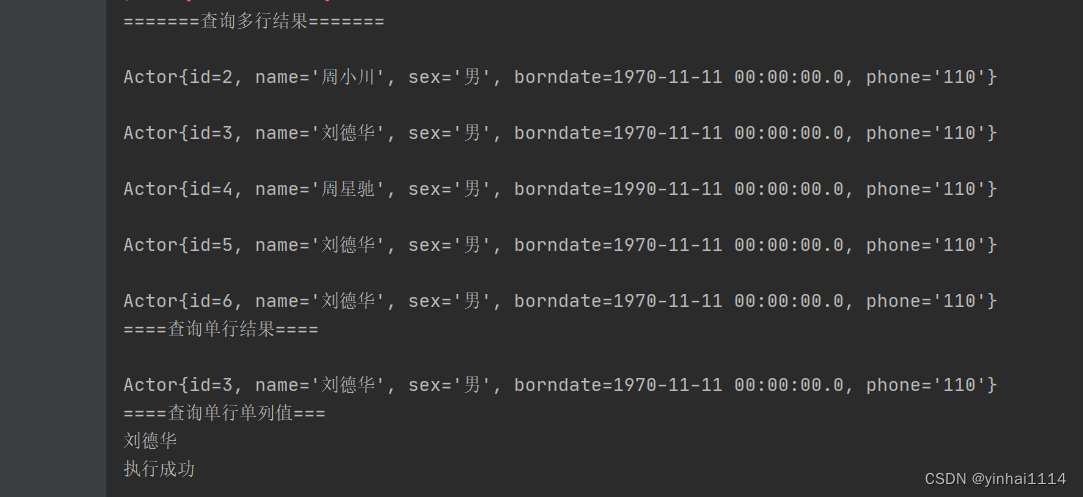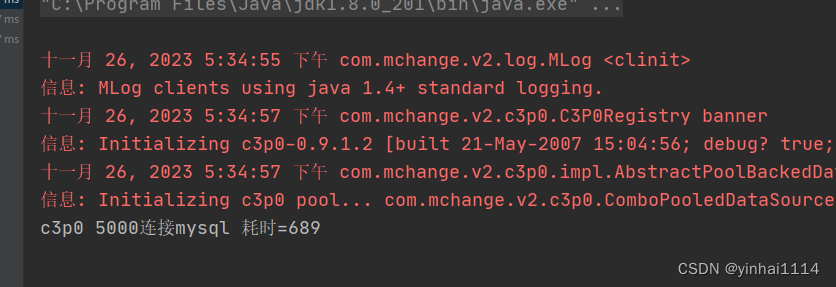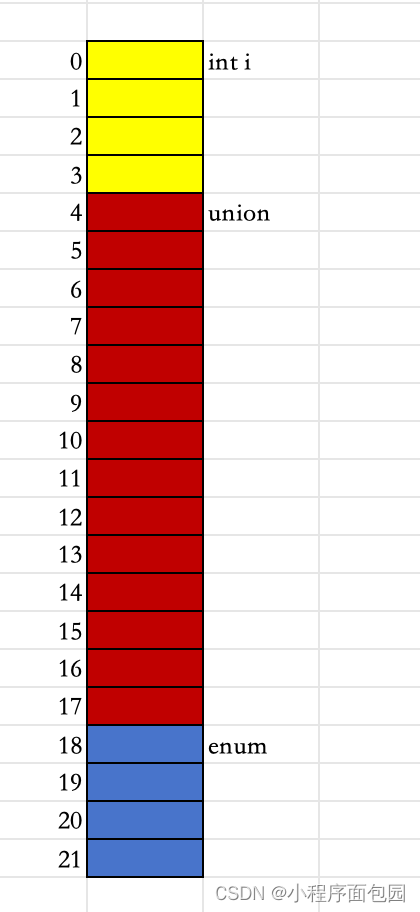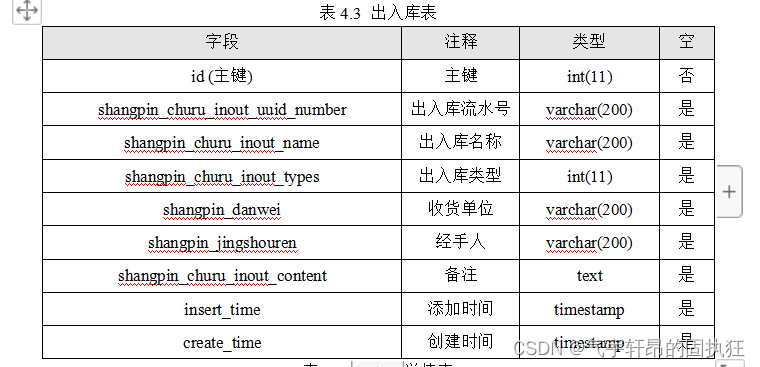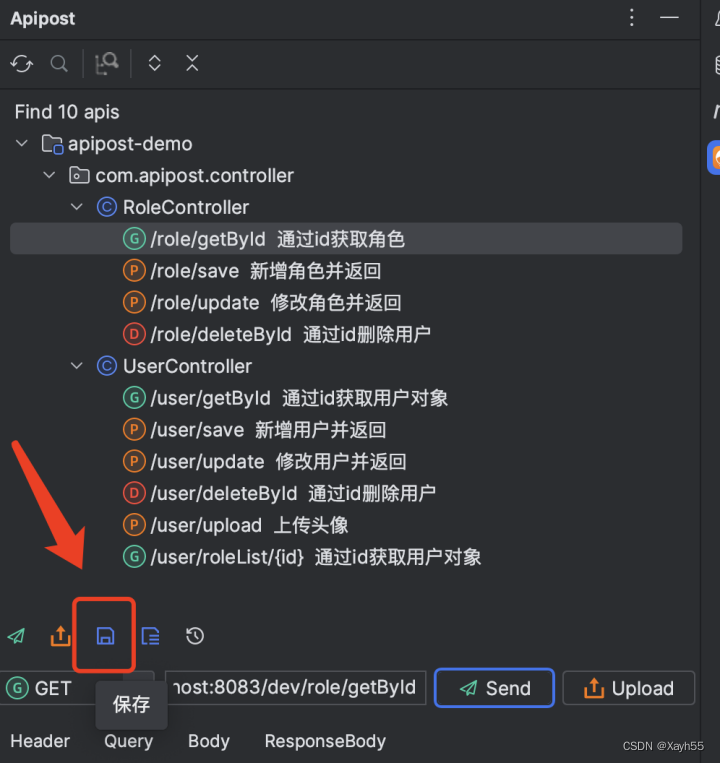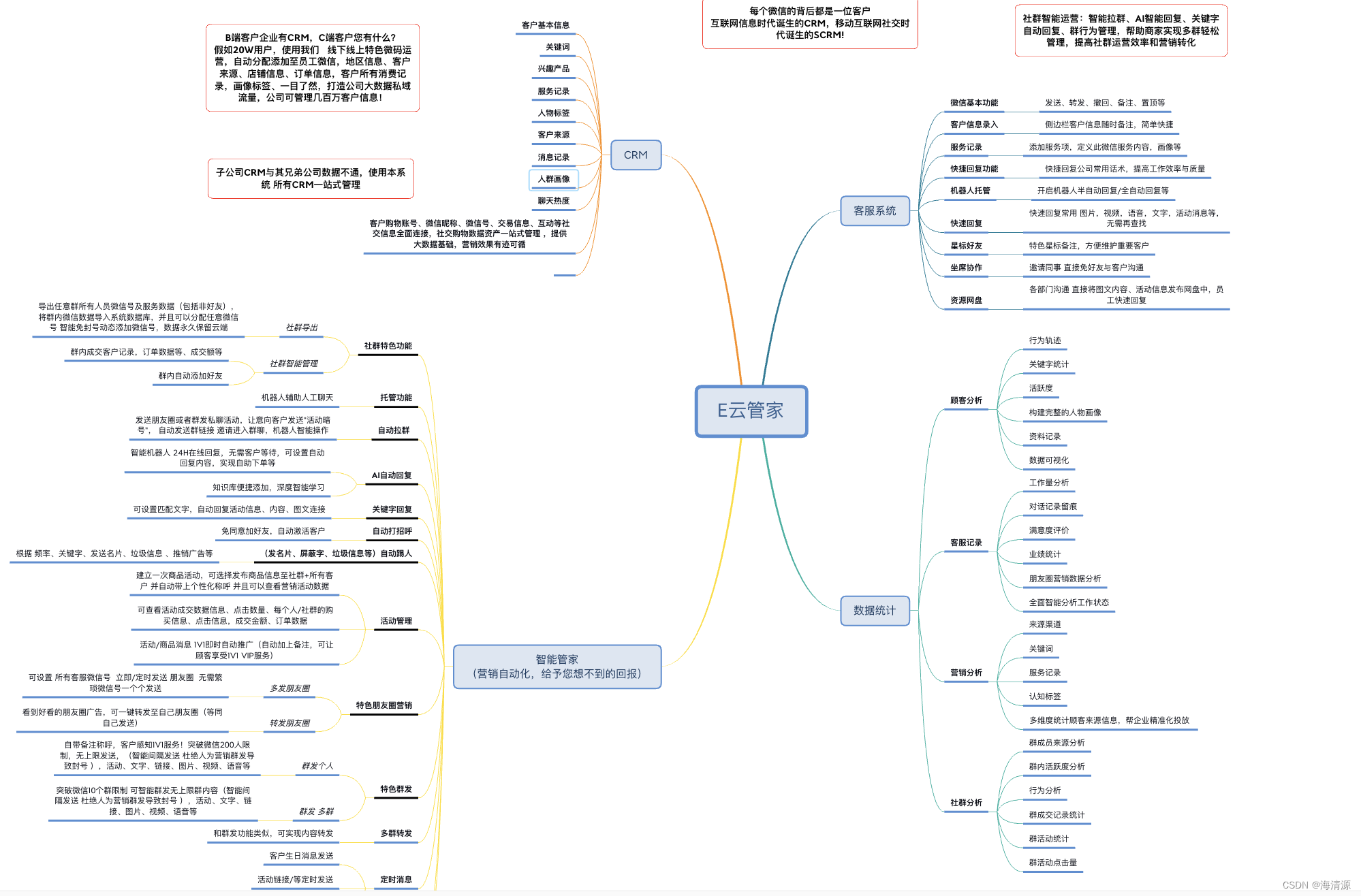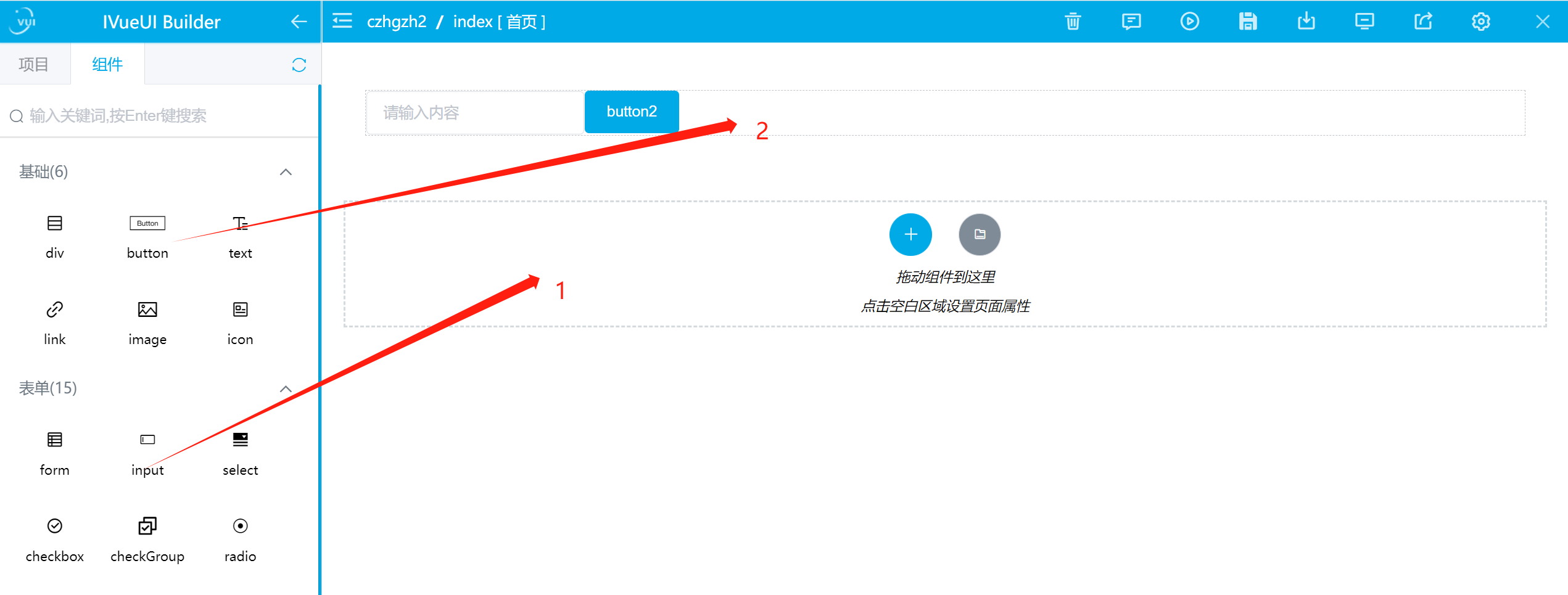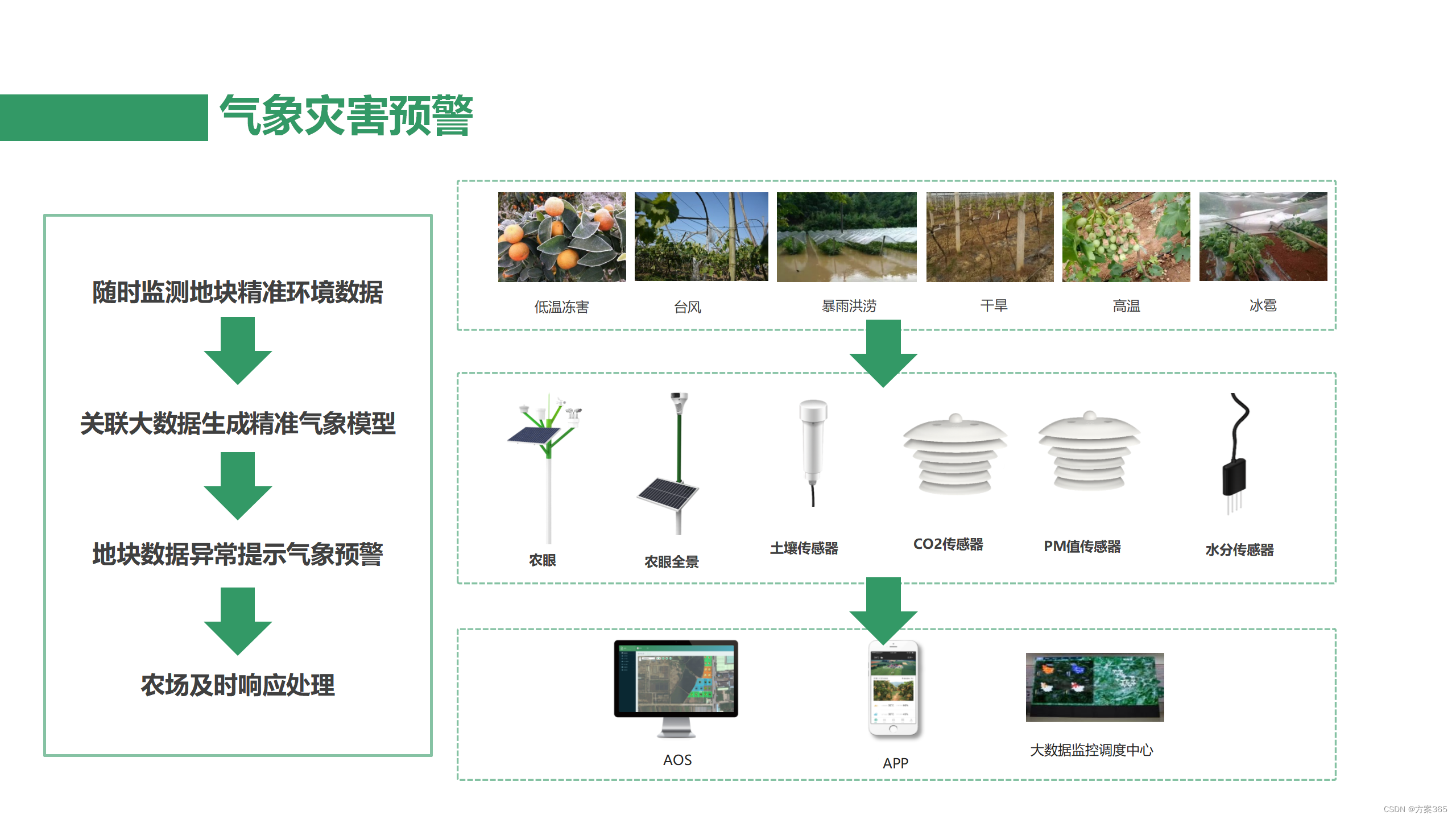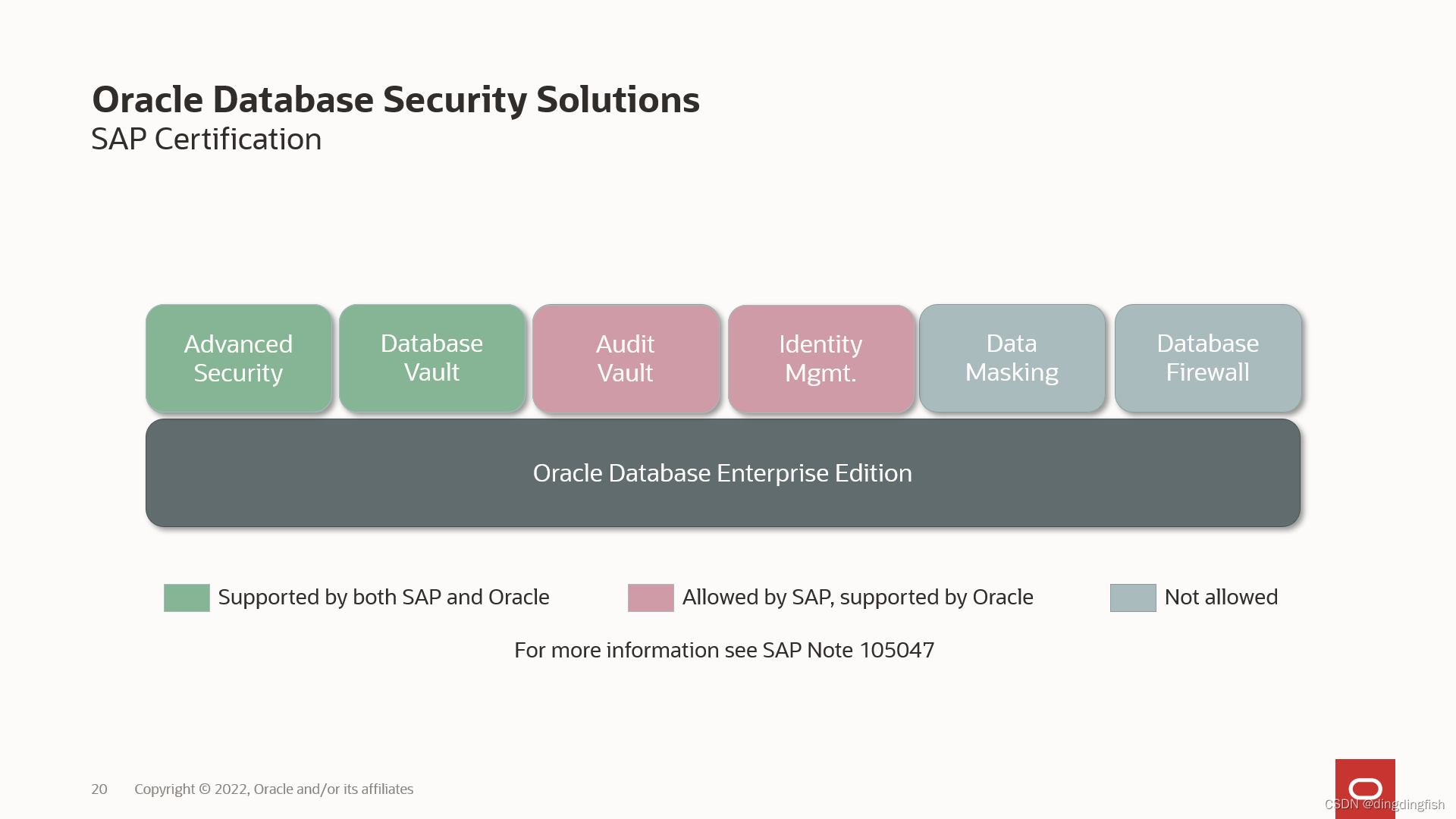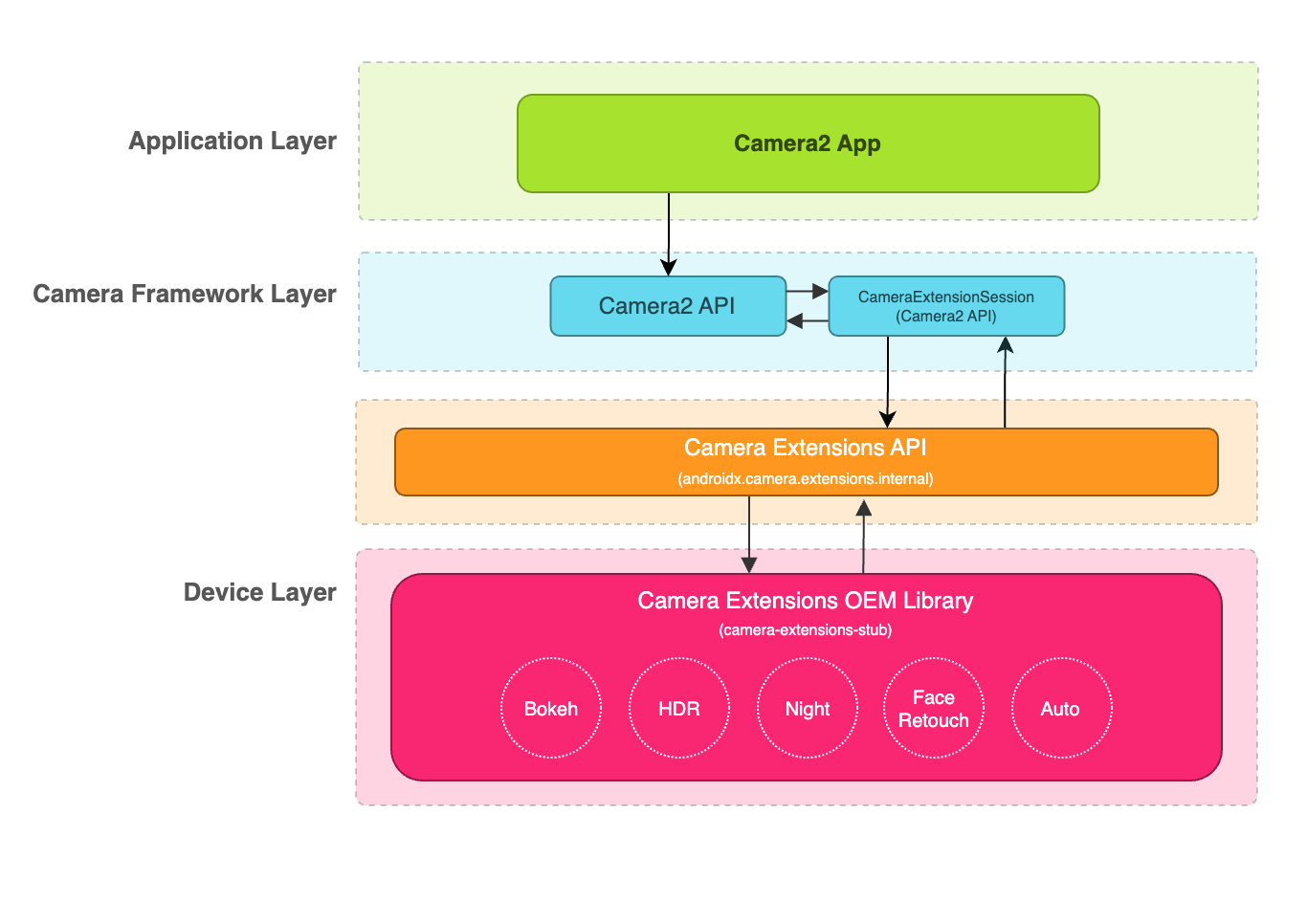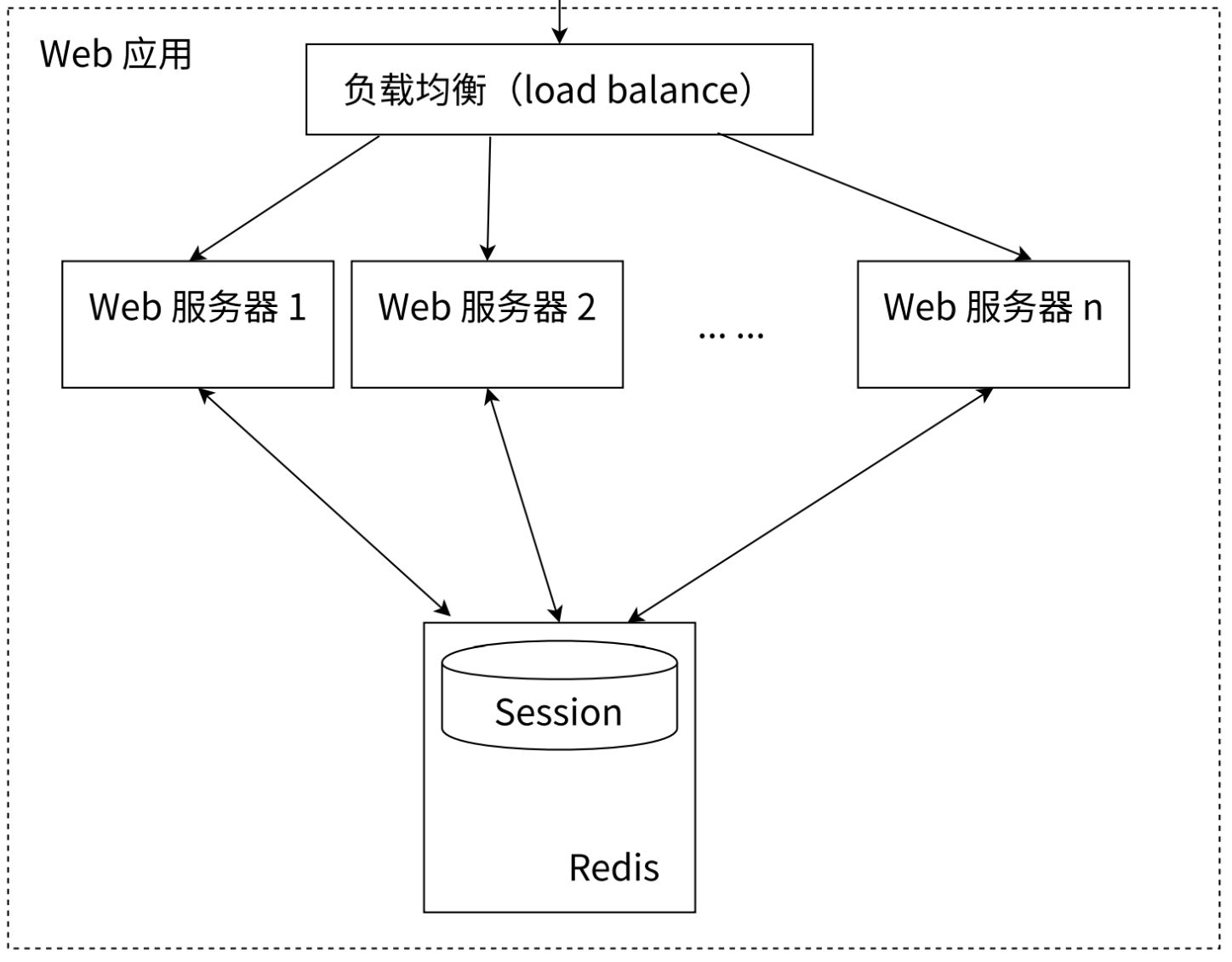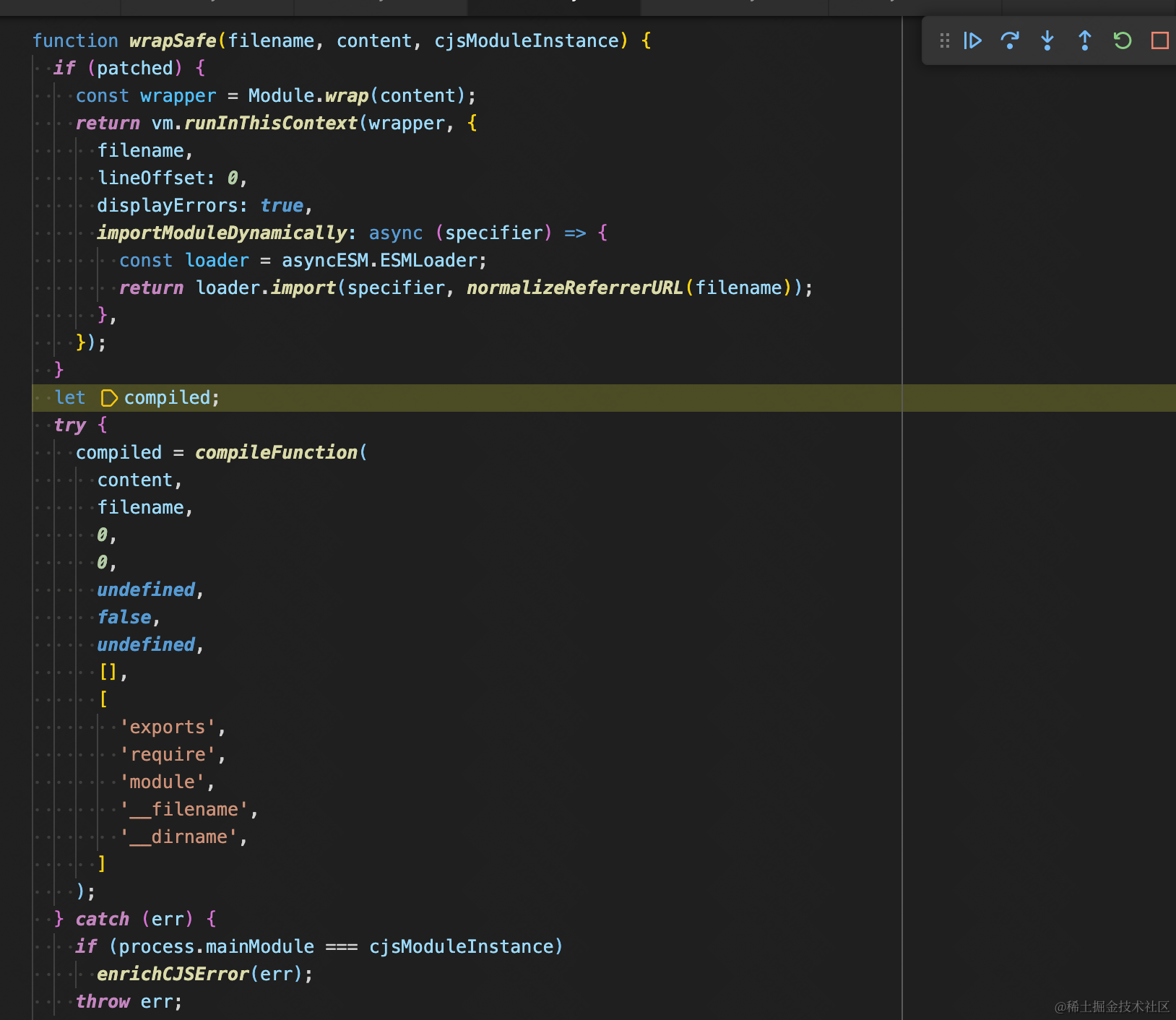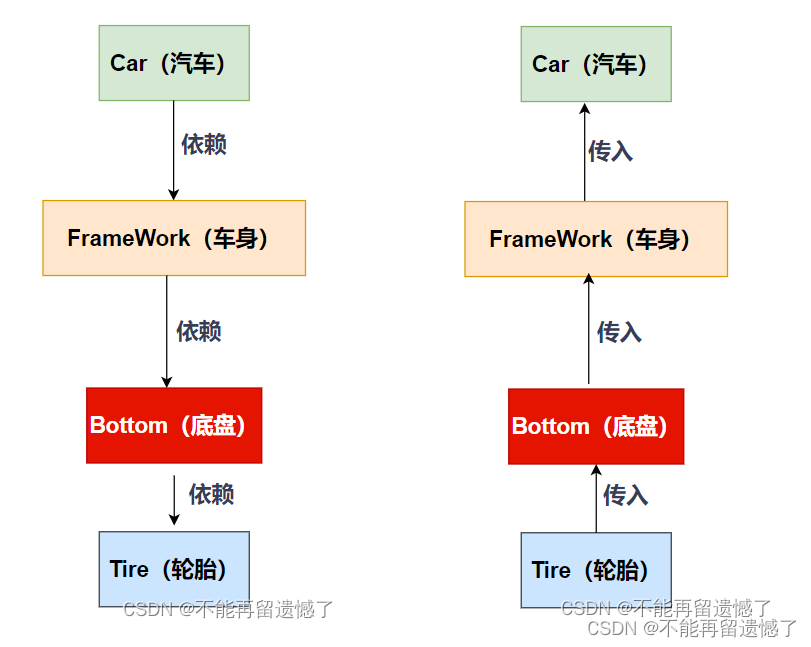项目代码
https://github.com/yinhai1114/Java_Learning_Code/tree/main/IDEA_Chapter25/src/com/yinhai/dao_
一、JDBC概述
1.基本介绍
1. JDBC为访问不同的数据库提供了统一的接口,为使用者屏蔽了细节问题。
2. Java程序员使用JDBC,可以连接任何提供了JDBC驱动程序的数据库系统,从而完成对数据库的各种操作。
3. JDBC的基本原理(原理)
4.模拟JDBC
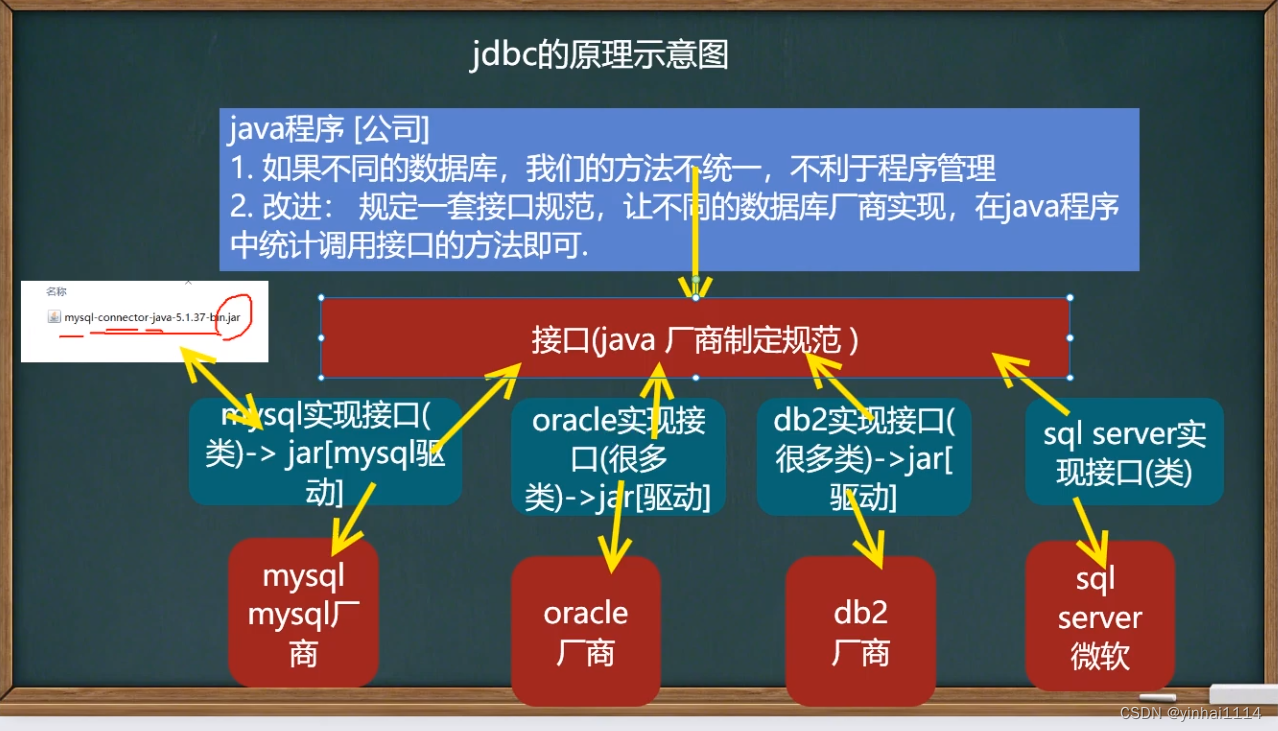
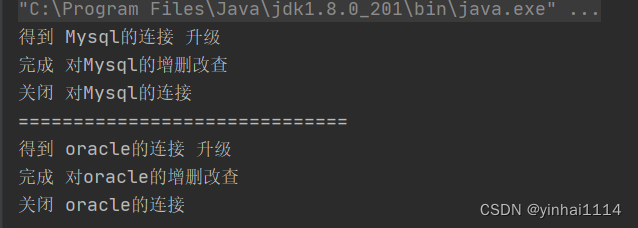
2.JDBC带来的好处
2. JDBC带来的好处(示意图)
3.说明:JDBC是Java提供一套用于数据库操作的接口API, Java程序员只需要面向这套接口编程即可。不同的数据库厂商,需要针对这套接口,提供不同实现。
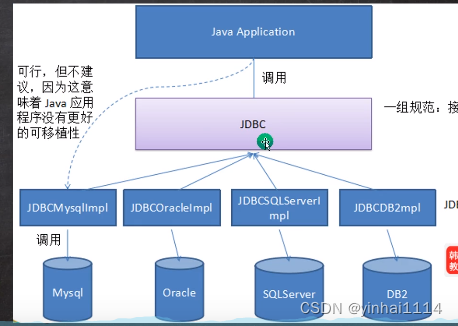
2.JDBC API
JDBC API是一系列的接口,它统一和规范了应用程序与数据库的连接、执行SQL语句,并到得到返回结果等各类操作,相关类和接口在java.sql与javax.sql包中
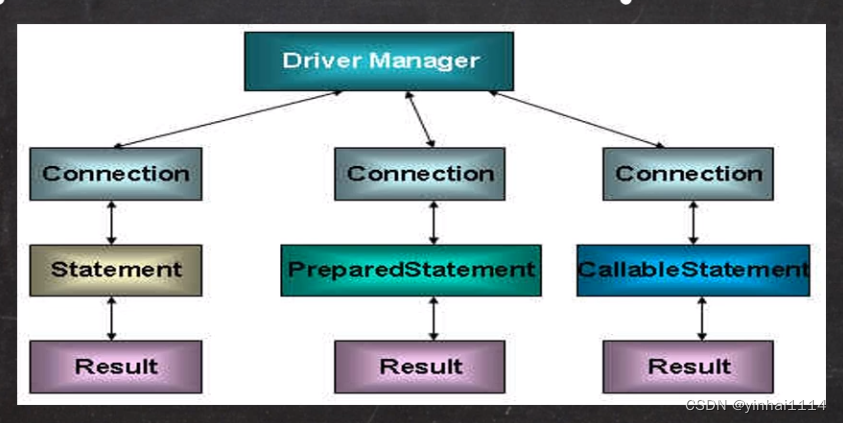
二、JDBC快速入门
1.JDBC程序编写的步骤
1.注册驱动 - 加载Driver类
2.获取连接 - 得到Connection
3.执行增删改查 -发送SQL给mysql执行
4.释放资源 - 关闭相关资源
2.JDBC第一个程序
创建一个表
CREATE TABLE actor ( -- 演员表
id INT PRIMARY KEY AUTO_INCREMENT,
NAME VARCHAR (32) NOT NULL DEFAULT '',
sex CHAR(1) NOT NULL DEFAULT '女',
borndate DATETIME,
phone VARCHAR(12)
)
SELECT * FROM actor
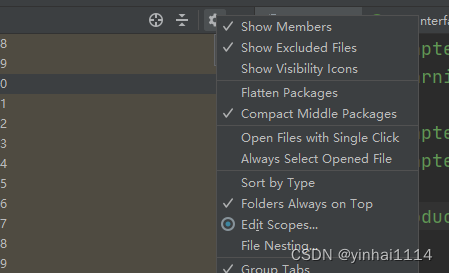
compact middle package可以关闭分级显示
前置工作

注意 创建的驱动应当是 我们引入的jar包下的
我们引入的jar包下的
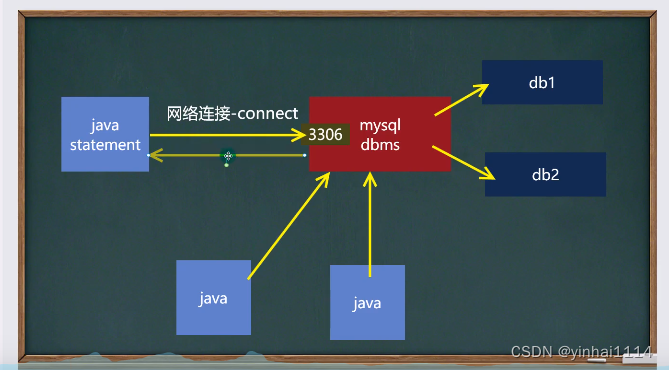
public class Jdbc01 {public static void main(String[] args) throws SQLException {//1.注册驱动Driver driver = new Driver();//2.得到连接//(1) jdbc:mysql:// 规定好表示协议,通过jdbc的方式连接mysql//(2) localhost 主机,可以是ip地址//(3) 3306 表示mysql监听的端口//(4) hsp_db02 连接到mysql dbms 的哪个数据库//(5) mysql的连接本质就是前面学过的socket连接String url = "jdbc:mysql://localhost:3306/yh_db02";//将 用户名和密码放入到Properties 对象Properties properties = new Properties();//说明 user和password是规定号的,后面的值根据实际情况写properties.setProperty("user","root");//用户properties.setProperty("password","1114");//密码Connection connect = driver.connect(url, properties);//尝试连接//3.执行sqlString sql = "insert into actor values(null, '刘德华', '男', '1970-11-11', '110')";//插入// String sql = "update actor set name = '周小川' where id = 1";//修改// String sql = "delete from actor where id = 1";Statement statement = connect.createStatement();//这个对象可以帮助执行静态sql语句并返回其生成的结果对象int rows = statement.executeUpdate(sql);//返回的是影响的行数System.out.println(rows > 0 ? "成功" : "失败");//4.关闭连接statement.close();//用完后记得及时关闭connect.close();}
}


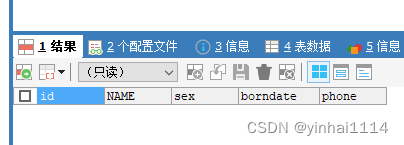
三、连接数据库的5种方式
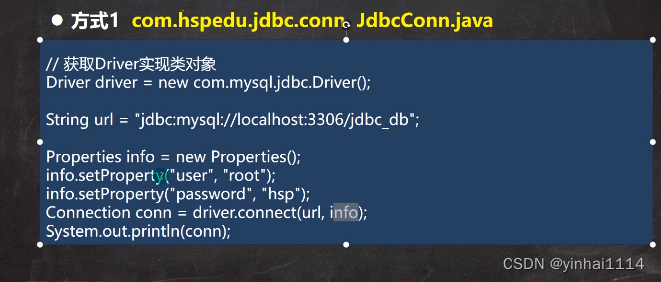
@Testpublic void connect01() throws SQLException {Driver driver = new Driver();String url = "jdbc:mysql://localhost:3306/yh_db02";Properties properties = new Properties();properties.setProperty("user","root");//用户properties.setProperty("password","1114");//密码Connection connect = driver.connect(url, properties);//尝试连接System.out.println(connect);}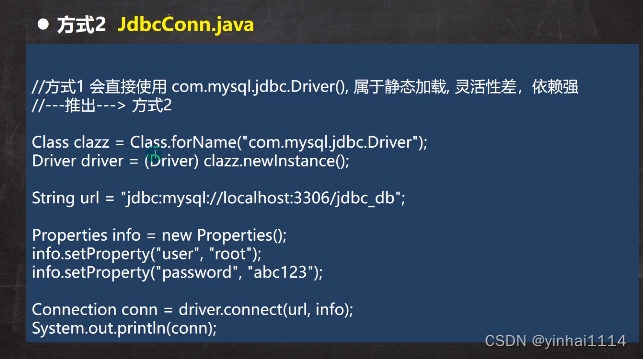
@Testpublic void connect02() throws SQLException, Exception {//使用反射加载Driver类Class<?> aClass = Class.forName("com.mysql.jdbc.Driver");Driver driver = (Driver) aClass.newInstance();String url = "jdbc:mysql://localhost:3306/yh_db02";Properties properties = new Properties();properties.setProperty("user","root");//用户properties.setProperty("password","1114");//密码Connection connect = driver.connect(url, properties);//尝试连接System.out.println(connect);}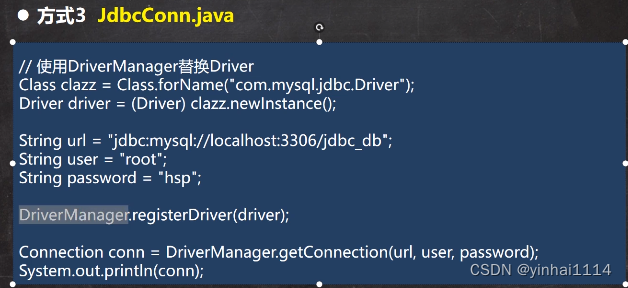
@Testpublic void connect03() throws ClassNotFoundException, IllegalAccessException, InstantiationException, SQLException {Class<?> aClass = Class.forName("com.mysql.jdbc.Driver");Driver driver = (Driver) aClass.newInstance();//创建url和user和passwordString url = "jdbc:mysql://localhost:3306/yh_db02";String user = "root";String password = "1114";DriverManager.registerDriver(driver);//注册driver驱动Connection connection = DriverManager.getConnection(url, user, password);System.out.println(connection);}
1. mysql驱动5.1.6可以无需CLass.forName("com.mysql.jdbc.Driver");
2.从jdk1.5以后 使用了jdbc4,不再需要显示调用class.forName()注册驱动而是自动调用驱动jar包下META-INF\services\java.sql.Driver文本中的类名称去注册
3.建议还是写上CLass.forName

@Testpublic void connect05() throws IOException, ClassNotFoundException, SQLException {//通过Properties对象获取配置文件的信息Properties properties = new Properties();properties.load(new FileInputStream("src\\mysql.properties"));String user = properties.getProperty("user");String password = properties.getProperty("password");String driver = properties.getProperty("driver");String url = properties.getProperty("url");Class.forName(driver);//加载驱动Connection connection = DriverManager.getConnection(url, user, password);System.out.println("" + connection);}
@Testpublic void connectTest() throws IOException, ClassNotFoundException, SQLException {Properties properties = new Properties();properties.load(new FileInputStream("src\\mysql.properties"));String user = properties.getProperty("user");String password = properties.getProperty("password");String driver = properties.getProperty("driver");String url = properties.getProperty("url");Class.forName(driver);//加载驱动Connection connection = DriverManager.getConnection(url, user, password);Statement statement = connection.createStatement();// statement.executeUpdate("CREATE TABLE news(" +// "id INT PRIMARY KEY AUTO_INCREMENT," +// "content varchar(128))");// statement.executeUpdate("insert into news value(null, 'hellllllllllllllllllllo1')");// statement.executeUpdate("insert into news value(null, 'hellllllllllllllllllllo2')");// statement.executeUpdate("insert into news value(null, 'hellllllllllllllllllllo3')");// statement.executeUpdate("insert into news value(null, 'hellllllllllllllllllllo4')");// statement.executeUpdate("insert into news value(null, 'hellllllllllllllllllllo5')");statement.executeUpdate("update news set content = 'yinhaiMeow' where id = 1");statement.executeUpdate("delete from news where id = 3");//4.关闭连接statement.close();//用完后记得及时关闭connection.close();}
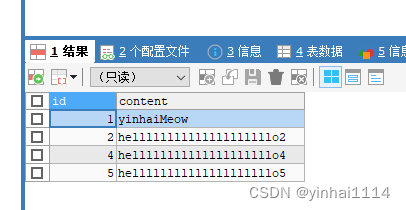
四、ResultSet结果集
1.基本介绍
1.表示数据库结果集的数据表,通常通过执行查询数据库的语句生成
2. ResultSet对象保持一个光标指向其当前的数据行。 最初,光标位于第一行之前
3. next方法将光标移动到下一 行,并且由于在ResultSet对象中没有更多行时返回false ,因此可以在while循环中使用循环来遍历结果集
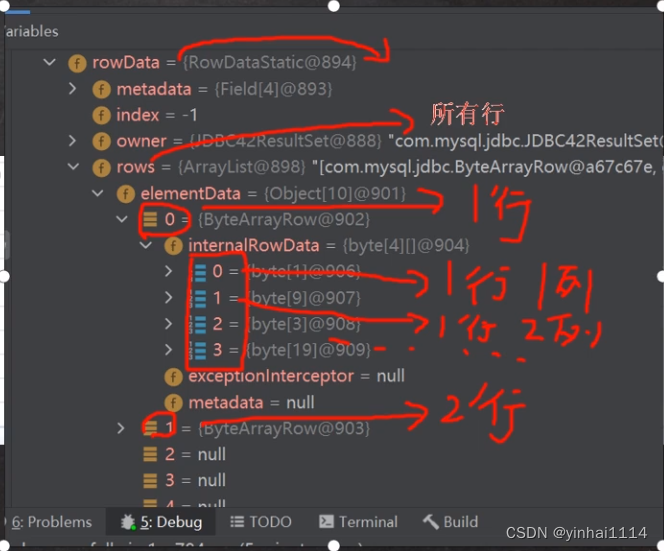
public class ResultSet01 {public static void main(String[] args) throws Exception {Properties properties = new Properties();properties.load(new FileInputStream("IDEA_Chapter25/src/mysql.properties"));//获取相关的值String user = properties.getProperty("user");String password = properties.getProperty("password");String driver = properties.getProperty("driver");String url = properties.getProperty("url");//1. 注册驱动Class.forName(driver);//建议写上//2. 得到连接Connection connection = DriverManager.getConnection(url, user, password);//3. 得到StatementStatement statement = connection.createStatement();//4. 组织SqLString sql = "select id, name , sex, borndate from actor";//执行给定的SQL语句,该语句返回单个 ResultSet对象/*+----+-----------+-----+---------------------+| id | name | sex | borndate |+----+-----------+-----+---------------------+-------+| 4 | 刘德华 | 男 | 1970-12-12 00:00:00 || 5 | 周星驰 | 男 | 1990-11-11 00:00:00 |+----+-----------+-----+---------------------+-------+*//*阅读debug 代码 resultSet 对象的结构*/ResultSet resultSet = statement.executeQuery(sql);//5. 使用while取出数据while (resultSet.next()) { // 让光标向后移动,如果没有更多行,则返回falseint id = resultSet.getInt(1); //获取该行的第1列//int id1 = resultSet.getInt("id"); 通过列名来获取值, 推荐String name = resultSet.getString(2);//获取该行的第2列String sex = resultSet.getString(3);Date date = resultSet.getDate(4);System.out.println(id + "\t" + name + "\t" + sex + "\t" + date);}//6. 关闭连接resultSet.close();statement.close();connection.close();}
}五、Statement
1.基本介绍
1. Statement对象用于执行静态SQL语句并返回其生成的结果的对象
2.在连接建立后,需要对数据库进行访问,执行命名或是SQL语句,可以通过
Statement(存在SQL注入)
PreparedStatement(预处理)
CallableStatement (存储过程)
3. Statement对象执行SQL 语句,存在SQL注入风险

4. SQL 注入是利用某些系统没有对用户输入的数据进行充分的检查,而在用户输入数据中注入非法的SQL语句段或命令,恶意攻击数据库。
5.要防范SQL注入,只要用PreparedStatement(从Statement拓展而来)取代Statement就可以了
-- 演示sql 注入
-- 创建一张表
CREATE TABLE admin ( -- 管理员表
NAME VARCHAR(32) NOT NULL UNIQUE,
pwd VARCHAR(32) NOT NULL DEFAULT '') CHARACTER SET utf8;-- 添加数据
INSERT INTO admin VALUES('tom', '123');-- 查找某个管理是否存在SELECT * FROM adminWHERE NAME = 'tom' AND pwd = '123'-- SQL
-- 输入用户名 为 1' or
-- 输入万能密码 为 or '1'= '1
SELECT * FROM adminWHERE NAME = '1' OR' AND pwd = 'OR '1'= '1'
SELECT * FROM adminpublic class Statement_ {public static void main(String[] args) throws Exception {Scanner scanner = new Scanner(System.in);//让用户输入管理员名和密码System.out.print("请输入管理员的名字: "); //next(): 当接收到 空格或者 '就是表示结束String admin_name = scanner.nextLine(); // 说明,如果希望看到SQL注入,这里需要用nextLineSystem.out.print("请输入管理员的密码: ");String admin_pwd = scanner.nextLine();//通过Properties对象获取配置文件的信息Properties properties = new Properties();properties.load(new FileInputStream("src\\mysql.properties"));//获取相关的值String user = properties.getProperty("user");String password = properties.getProperty("password");String driver = properties.getProperty("driver");String url = properties.getProperty("url");//1. 注册驱动Class.forName(driver);//建议写上//2. 得到连接Connection connection = DriverManager.getConnection(url, user, password);//3. 得到StatementStatement statement = connection.createStatement();//4. 组织SqLString sql = "select name , pwd from admin where name ='"+ admin_name + "' and pwd = '" + admin_pwd + "'";ResultSet resultSet = statement.executeQuery(sql);if (resultSet.next()) { //如果查询到一条记录,则说明该管理存在System.out.println("恭喜, 登录成功");} else {System.out.println("对不起,登录失败");}//关闭连接resultSet.close();statement.close();connection.close();}
}
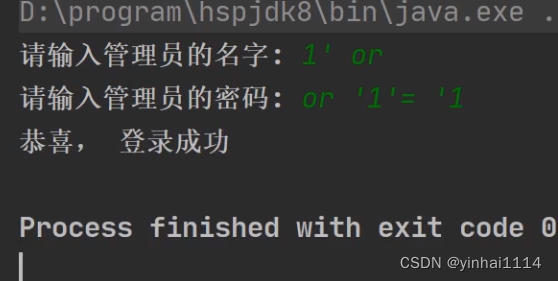
2.PreparedStatement


基本介绍
1. PreparedStatement执行的SQL语句中的参数用问号(?)来表示,调用PreparedStatement对象的setXxx()方法来设置这些参数。 setXxx()方法有两个参数,第一个参数是要设置的SQL语包中的参数的索引(从1开始),第二个是设置的SQL语句中的参数的值
2.调用executeQuery(), 返回ResultSet对象
3.调用executeUpdate():执行更新,包括增、删、修改
预处理的好处
1.不再使用+拼接sq|语句,减少语法错误
2.有效的解决了sq|注入问题!
3.大大减少了编译次数,效率较高
案例
public class PreparedStatement_ {public static void main(String[] args) throws Exception {Scanner scanner = new Scanner(System.in);//让用户输入管理员名和密码System.out.print("请输入管理员的名字: "); //next(): 当接收到 空格或者 '就是表示结束String admin_name = scanner.nextLine(); // 说明,如果希望看到SQL注入,这里需要用nextLineSystem.out.print("请输入管理员的密码: ");String admin_pwd = scanner.nextLine();//通过Properties对象获取配置文件的信息Properties properties = new Properties();properties.load(new FileInputStream("src\\mysql.properties"));//获取相关的值String user = properties.getProperty("user");String password = properties.getProperty("password");String driver = properties.getProperty("driver");String url = properties.getProperty("url");//1. 注册驱动Class.forName(driver);//建议写上//2. 得到连接Connection connection = DriverManager.getConnection(url, user, password);//3. 得到Statement//3.1组织SqLString sql = "select name,pwd from admin where name = ? and pwd = ?";//sql语句要写在pre之前//3.2preparedStatement 对象实现了 PreparedStatement 接口的实现类的对象PreparedStatement preparedStatement = connection.prepareStatement(sql);//3.3给?赋值preparedStatement.setString(1,admin_name);preparedStatement.setString(2,admin_pwd);//执行select使用executeQueryResultSet resultSet = preparedStatement.executeQuery();//这里面的sql不要再写sql了 , 已经被prepareStatement处理过了//如果执行的是dml语句(update,insert,delete)executeUpdate()if (resultSet.next()) { //如果查询到一条记录,则说明该管理存在System.out.println("恭喜, 登录成功");} else {System.out.println("对不起,登录失败");}//关闭连接resultSet.close();preparedStatement.close();connection.close();}
}
案例执行dml
public class PreparedStatementDML_ {public static void main(String[] args) throws Exception {//看 PreparedStatement类图Scanner scanner = new Scanner(System.in);//让用户输入管理员名和密码System.out.print("请输删除管理员的名字: "); //next(): 当接收到 空格或者 '就是表示结束String admin_name = scanner.nextLine(); // 说明,如果希望看到SQL注入,这里需要用nextLineSystem.out.print("请输入管理员的新密码: ");String admin_pwd = scanner.nextLine();//通过Properties对象获取配置文件的信息Properties properties = new Properties();properties.load(new FileInputStream("src\\mysql.properties"));//获取相关的值String user = properties.getProperty("user");String password = properties.getProperty("password");String driver = properties.getProperty("driver");String url = properties.getProperty("url");//1. 注册驱动Class.forName(driver);//建议写上//2. 得到连接Connection connection = DriverManager.getConnection(url, user, password);//3. 得到PreparedStatement//3.1 组织SqL , Sql 语句的 ? 就相当于占位符//添加记录// String sql = "insert into admin values(?, ?)";String sql = "update admin set pwd = ? where name = ?";// String sql = "delete from admin where name = ?";//3.2 preparedStatement 对象实现了 PreparedStatement 接口的实现类的对象PreparedStatement preparedStatement = connection.prepareStatement(sql);//3.3 给 ? 赋值preparedStatement.setString(1, admin_pwd);preparedStatement.setString(2, admin_name);//4. 执行 dml 语句使用 executeUpdateint rows = preparedStatement.executeUpdate();System.out.println(rows > 0 ? "执行成功" : "执行失败");//关闭连接preparedStatement.close();connection.close();}
}
课堂练习
1.创建admin表
2.使用PreparedStamtement添加5条数据
3.修改tom的记录,将username改成king
4.删除一条的记录
5.查询全部记录,并显示在控制台
public class Work01 {public static void main(String[] args) throws ClassNotFoundException, IOException, SQLException {//使用反射加载Driver类Properties properties = new Properties();properties.load(new FileInputStream("IDEA_Chapter25/src/mysql.properties"));String user = properties.getProperty("user");String password = properties.getProperty("password");String driver = properties.getProperty("driver");String url = properties.getProperty("url");Class<?> aClass = Class.forName(driver);Connection connection = DriverManager.getConnection(url,user,password);String sql = "create table admin( \n " +"name VARCHAR(32) NOT NULL UNIQUE,\n" +"pwd VARCHAR(32) NOT NULL DEFAULT '')";String sql1 = "INSERT INTO admin VALUES('tom', '123') " +",('tom1', '123')" +",('tom2', '123')" +",('tom3', '123')" +",('tom4', '123')" +"";String sql2 = "update admin set name = 'king' where name = 'tom'";String sql3 = "delete from admin where name = 'tom2'";String sql4 = "select * from admin";PreparedStatement preparedStatement = connection.prepareStatement(sql);PreparedStatement preparedStatement1 = connection.prepareStatement(sql1);PreparedStatement preparedStatement2 = connection.prepareStatement(sql2);PreparedStatement preparedStatement3 = connection.prepareStatement(sql3);PreparedStatement preparedStatement4 = connection.prepareStatement(sql4);// preparedStatement.executeUpdate();// preparedStatement1.executeUpdate();// preparedStatement2.executeUpdate();// preparedStatement3.executeUpdate();ResultSet resultSet = preparedStatement4.executeQuery();while (resultSet.next()){String name = resultSet.getString("name");String pwd = resultSet.getString("pwd");System.out.println(name + " " + pwd);}resultSet.close();connection.close();// preparedStatement.close();// preparedStatement1.close();// preparedStatement2.close();// preparedStatement3.close();preparedStatement4.close();}
}

六、JdbcAPI
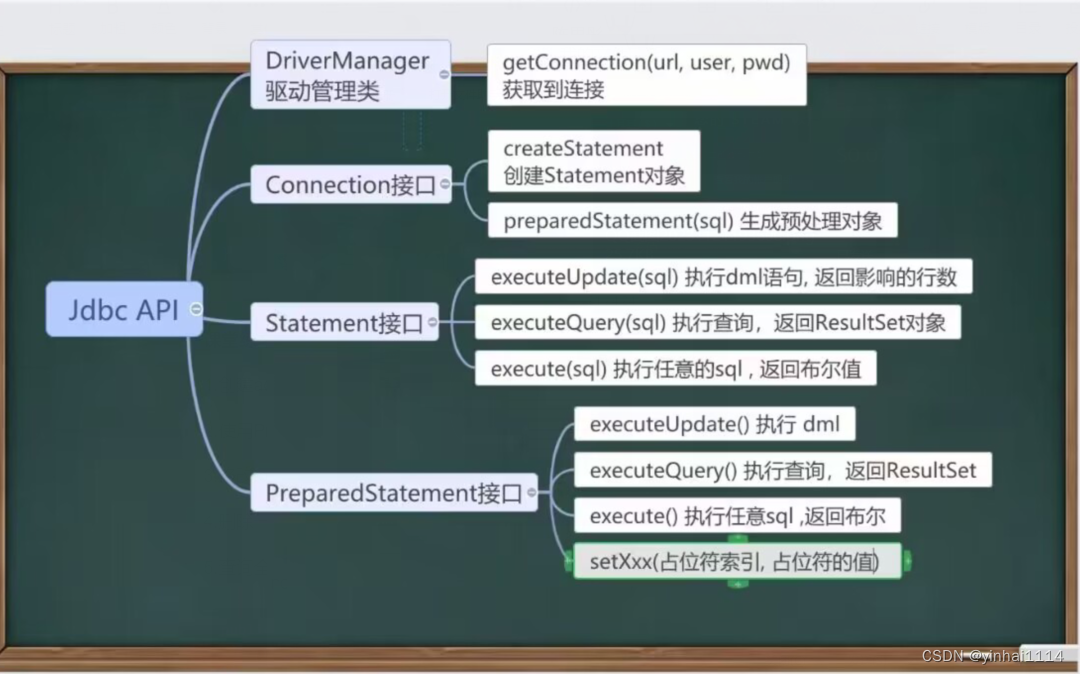
七、封装JDBCUtils
在jdbc操作中,获取连接和释放资源是经常使用到,将其封装JDBC连接的工具类JDBCUtils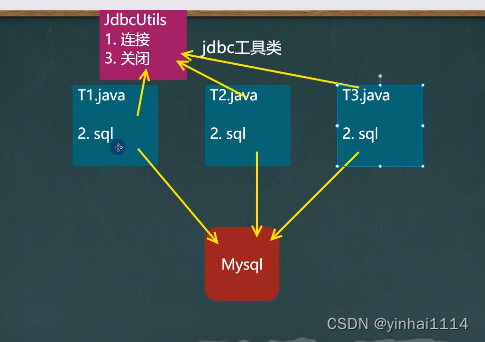
JDBCUtils
public class JDBCUtils {//定义相关的属性(4个), 因为只需要一份,因此,我们做出staticprivate static String user; //用户名private static String password; //密码private static String url; //urlprivate static String driver; //驱动名//在static代码块去初始化static {try {Properties properties = new Properties();properties.load(new FileInputStream("src\\mysql.properties"));//读取相关的属性值user = properties.getProperty("user");password = properties.getProperty("password");url = properties.getProperty("url");driver = properties.getProperty("driver");} catch (IOException e) {//在实际开发中,我们可以这样处理//1. 将编译异常转成 运行异常//2. 调用者,可以选择捕获该异常,也可以选择默认处理该异常,比较方便.throw new RuntimeException(e);}}//连接数据库, 返回Connectionpublic static Connection getConnection() {try {return DriverManager.getConnection(url, user, password);} catch (SQLException e) {//1. 将编译异常转成 运行异常//2. 调用者,可以选择捕获该异常,也可以选择默认处理该异常,比较方便.throw new RuntimeException(e);}}//关闭相关资源/*1. ResultSet 结果集2. Statement 或者 PreparedStatement3. Connection4. 如果需要关闭资源,就传入对象,否则传入 null*/public static void close(ResultSet set, Statement statement, Connection connection) {//判断是否为nulltry {if (set != null) {set.close();}if (statement != null) {statement.close();}if (connection != null) {connection.close();}} catch (SQLException e) {//将编译异常转成运行异常抛出throw new RuntimeException(e);}}}JDBCUtils_Use
public class JDBCUtils_Use {@Testpublic void testSelect() {//1. 得到连接Connection connection = null;//2. 组织一个sqlString sql = "select * from actor where id = ?";PreparedStatement preparedStatement = null;ResultSet set = null;//3. 创建PreparedStatement 对象try {connection = JDBCUtils.getConnection();System.out.println(connection.getClass()); //com.mysql.jdbc.JDBC4ConnectionpreparedStatement = connection.prepareStatement(sql);preparedStatement.setInt(1, 5);//给?号赋值//执行, 得到结果集set = preparedStatement.executeQuery();//遍历该结果集while (set.next()) {int id = set.getInt("id");String name = set.getString("name");String sex = set.getString("sex");Date borndate = set.getDate("borndate");String phone = set.getString("phone");System.out.println(id + "\t" + name + "\t" + sex + "\t" + borndate + "\t" + phone);}} catch (SQLException e) {e.printStackTrace();} finally {//关闭资源JDBCUtils.close(set, preparedStatement, connection);}}@Testpublic void testDML() {//insert , update, delete//1. 得到连接Connection connection = null;//2. 组织一个sqlString sql = "update actor set name = ? where id = ?";// 测试 delete 和 insert ,自己玩.PreparedStatement preparedStatement = null;//3. 创建PreparedStatement 对象try {connection = JDBCUtils.getConnection();preparedStatement = connection.prepareStatement(sql);//给占位符赋值preparedStatement.setString(1, "周星驰");preparedStatement.setInt(2, 4);//执行preparedStatement.executeUpdate();} catch (SQLException e) {e.printStackTrace();} finally {//关闭资源JDBCUtils.close(null, preparedStatement, connection);}}
}八、事务
1.基本介绍
1.JDBC程序中当一个Connection对象创建时,默认情况下是自动提交事务:每次执行一个SQL语句时,如果执行成功,就会向数据库自动提交,而不能回滚。
2.JDBC程序中为了让多个SQL语句作为一个整体执行,需要使用事务
3.调用Connection的setAutoCommit(false)可以取消自动提交事务
4.在所有的SQL语句都成功执行后,调用Connection的commit();方法提交事务
5.在其中某个操作失败或出现异常时,调用Connection的rollback();方法回滚事务
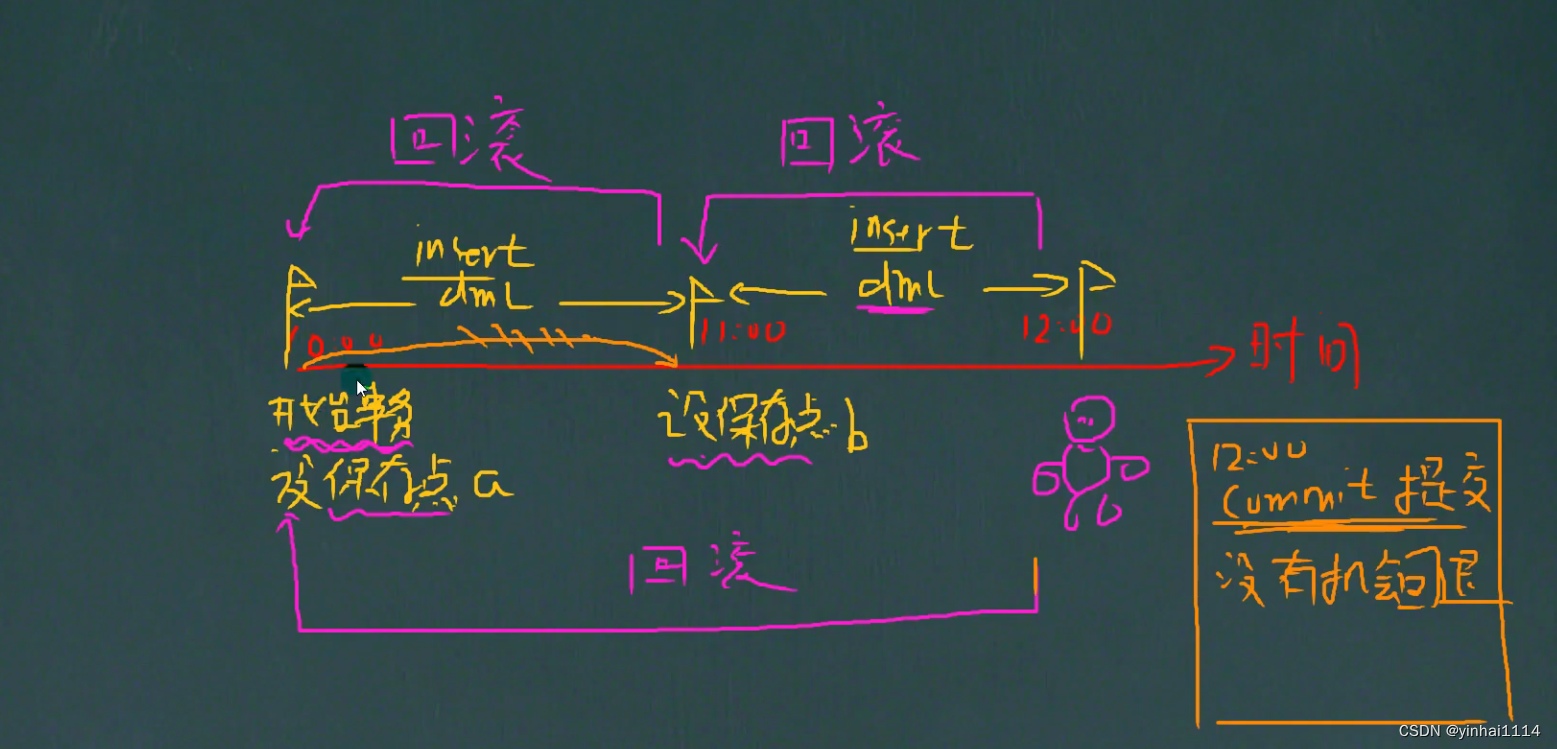
2.应用案例
创建一个表
CREATE TABLE ACCOUNT(id INT PRIMARY KEY AUTO_INCREMENT,NAME VARCHAR(32) NOT NULL DEFAULT '',balance DOUBLE NOT NULL DEFAULT 0) CHARACTER SET utf8;
INSERT INTO ACCOUNT VALUES(NULL, '马云',3000)INSERT INTO ACCOUNT VALUES(NULL, '马化腾',10000)

public class Transaction_ {//没有使用事务.@Testpublic void noTransaction() {//操作转账的业务//1. 得到连接Connection connection = null;//2. 组织一个sqlString sql = "update account set balance = balance - 100 where id = 1";String sql2 = "update account set balance = balance + 100 where id = 2";PreparedStatement preparedStatement = null;//3. 创建PreparedStatement 对象try {connection = JDBCUtils.getConnection(); // 在默认情况下,connection是默认自动提交preparedStatement = connection.prepareStatement(sql);preparedStatement.executeUpdate(); // 执行第1条sql,执行一句就自动提交int i = 1 / 0; //抛出异常preparedStatement = connection.prepareStatement(sql2);preparedStatement.executeUpdate(); // 执行第3条sql} catch (SQLException e) {e.printStackTrace();} finally {//关闭资源JDBCUtils.close(null, preparedStatement, connection);}}//事务来解决@Testpublic void useTransaction() {//操作转账的业务//1. 得到连接Connection connection = null;//2. 组织一个sqlString sql = "update account set balance = balance - 100 where id = 1";String sql2 = "update account set balance = balance + 100 where id = 2";PreparedStatement preparedStatement = null;//3. 创建PreparedStatement 对象try {connection = JDBCUtils.getConnection(); // 在默认情况下,connection是默认自动提交//将 connection 设置为不自动提交connection.setAutoCommit(false); //相当于开启了事务preparedStatement = connection.prepareStatement(sql);preparedStatement.executeUpdate(); // 执行第1条sqlint i = 1 / 0; //制造抛出异常preparedStatement = connection.prepareStatement(sql2);preparedStatement.executeUpdate(); // 执行第3条sql//这里提交事务connection.commit();} catch (SQLException e) {//这里我们可以进行回滚,即撤销执行的SQL//默认回滚到事务开始的状态.System.out.println("执行发生了异常,撤销执行的sql");try {connection.rollback();} catch (SQLException throwables) {throwables.printStackTrace();}e.printStackTrace();} finally {//关闭资源JDBCUtils.close(null, preparedStatement, connection);}}
}九、批处理
1.基本介绍
1.当需要成批插入或者更新记录时。可以采用Java的批量更新机制,这一机制允许多条语句次性提交给数据库批量处理。通常情况下比单独提交处理更有效率。
2.JDBC的批量处理语句包括下面方法:
addBatch():添加需要批量处理的SQL语句或参数
executeBatch():执行批量处理语句;
clearBatch():清空批处理包的语句
3.JDBC连接MySQL时,如果要使用批处理功能,必须在url中加参数?rewriteBatchedStatements = true
4. 批处理往往和PreparedStatement一起搭配使用,可以既减少编译次数,又减少运行次数,效率大大提高
创建空表
CREATE TABLE admin2(id INT PRIMARY KEY AUTO_INCREMENT,username VARCHAR(32) NOT NULL DEFAULT '',PASSWORD DOUBLE NOT NULL DEFAULT 0) CHARACTER SET utf8;
传统方法
//传统方法,添加5000条数据到admin2@Testpublic void noBatch() throws Exception {Connection connection = JDBCUtils.getConnection();String sql = "insert into admin2 values(null, ?, ?)";PreparedStatement preparedStatement = connection.prepareStatement(sql);System.out.println("开始执行");long start = System.currentTimeMillis();//开始时间for (int i = 0; i < 5000; i++) {//5000执行preparedStatement.setString(1, "jack" + i);preparedStatement.setString(2, "666");preparedStatement.executeUpdate();}long end = System.currentTimeMillis();System.out.println("传统的方式 耗时=" + (end - start));//传统的方式 耗时=10702//关闭连接JDBCUtils.close(null, preparedStatement, connection);}

使用批处理(url一定要带有该参数)

//使用批量方式添加数据@Testpublic void batch() throws Exception {Connection connection = JDBCUtils.getConnection();String sql = "insert into admin2 values(null, ?, ?)";PreparedStatement preparedStatement = connection.prepareStatement(sql);System.out.println("开始执行");long start = System.currentTimeMillis();//开始时间for (int i = 0; i < 5000; i++) {//5000执行preparedStatement.setString(1, "jack" + i);preparedStatement.setString(2, "666");//将sql 语句加入到批处理包中 -> 看源码/*//1. //第一就创建 ArrayList - elementData => Object[]//2. elementData => Object[] 就会存放我们预处理的sql语句//3. 当elementData满后,就按照1.5扩容//4. 当添加到指定的值后,就executeBatch//5. 批量处理会减少我们发送sql语句的网络开销,而且减少编译次数,因此效率提高public void addBatch() throws SQLException {synchronized(this.checkClosed().getConnectionMutex()) {if (this.batchedArgs == null) {this.batchedArgs = new ArrayList();}for(int i = 0; i < this.parameterValues.length; ++i) {this.checkAllParametersSet(this.parameterValues[i], this.parameterStreams[i], i);}this.batchedArgs.add(new PreparedStatement.BatchParams(this.parameterValues, this.parameterStreams, this.isStream, this.streamLengths, this.isNull));}}*/preparedStatement.addBatch();//当有1000条记录时,在批量执行if((i + 1) % 1000 == 0) {//满1000条sqlpreparedStatement.executeBatch();//清空一把preparedStatement.clearBatch();}}long end = System.currentTimeMillis();System.out.println("批量方式 耗时=" + (end - start));//批量方式 耗时=108//关闭连接JDBCUtils.close(null, preparedStatement, connection);}
十、数据库连接池
1. 5k次连接数据库问题
public class ConQuestion {//代码 连接mysql 5000次@Testpublic void testCon() {//看看连接-关闭 connection 会耗用多久long start = System.currentTimeMillis();System.out.println("开始连接.....");for (int i = 0; i < 5000; i++) {//使用传统的jdbc方式,得到连接Connection connection = JDBCUtils.getConnection();//做一些工作,比如得到PreparedStatement ,发送sql//..........//关闭JDBCUtils.close(null, null, connection);//如果不关闭 mysql会爆掉}long end = System.currentTimeMillis();System.out.println("传统方式5000次 耗时=" + (end - start));//传统方式5000次 频繁链接关闭耗时会非常长 耗时=8502}
}
只连接不关闭会超出上限 导致mysql拒绝访问

频繁的连接关闭又会导致耗时时间长

传统Connection问题分析
1.传统的JDBC数据库连接使用 DriverManager来获取,每次向数据库建立连接的时候都要将Connection加载到内存中,再验证IP地址,用户名和密码(0.05S ~1s时间)。需要数据库连接的时候,就向数据库要求一个,频繁的进行数据库连接操作将占用很多的系统资源,容易造成服务器崩溃。
2.每一次数据库连接,使用完后都得断开,如果程序出现异常而未能关闭,将导致数据库内存泄漏,最终将导致重启数据库。
3.传统获取连接的方式,不能控制创建的连接数量,如连接过多,也可能导致内存泄漏,MySQL崩溃。
4.解决传统开发中的数据库连接问题,可以采用数据库连接池技术(connection pool)
2.数据库连接池基本介绍
1.预先在缓冲池中放入一定数量的连接,当需要建立数据库连接时,只需从"缓冲池”中取出一个,使用完毕之后再放回去。
2.数据库连接池负责分配、 管理和释放数据库连接,它允许应用程序重复使用一个现有的数据库连接,而不是重新建立一个。
3.当应用程序向连接池请求的连接数超过最大连接数量时,这些请求将被加入到等待队列中
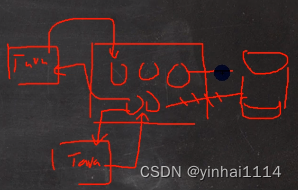
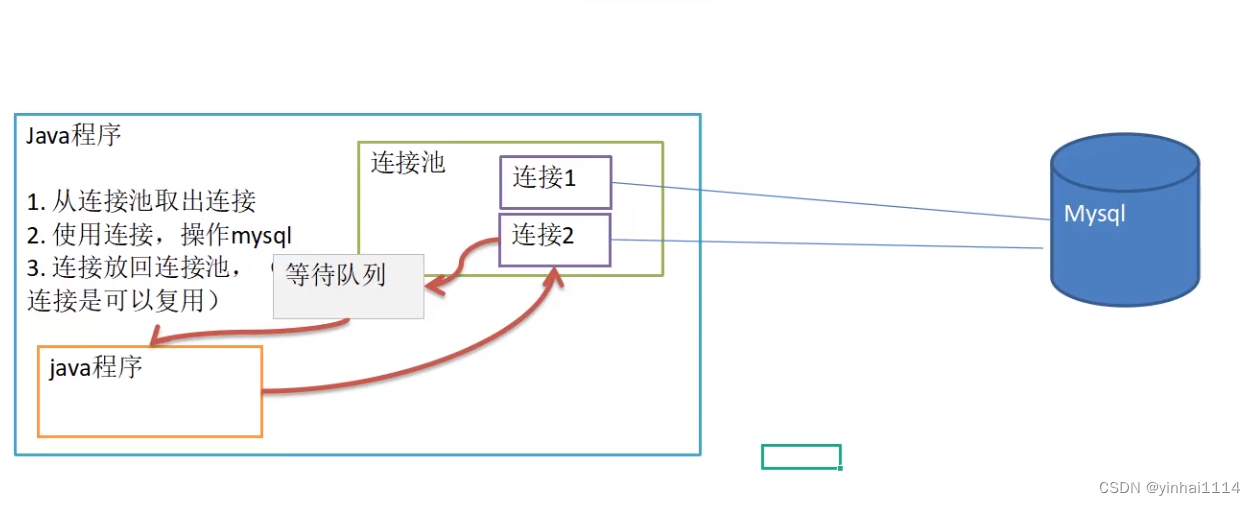
3.数据库连接池种类
1. JDBC 的数据库连接池使用javax.sql.DataSource来表示,DataSource只是一一个接口,该接口通常由第三方提供实现[会提供相对于的jar包]
2.C3PO数据库连接池,速度相对较慢,稳定性不错(hibernate, spring)
3. DBCP数据库连接池, 速度相对c3p0较快,但不稳定
4. Proxool数据库连接池, 有监控连接池状态的功能,稳定性较c3p0差一点
5.BoneCP数据库连接池,速度快
6.Druid(德鲁伊)是阿里提供的数据库连接池,集DBCP 、C3P0、Proxool优点于一身的数据库连接池
4.C3P0
方式1 在程序中指定相关参数
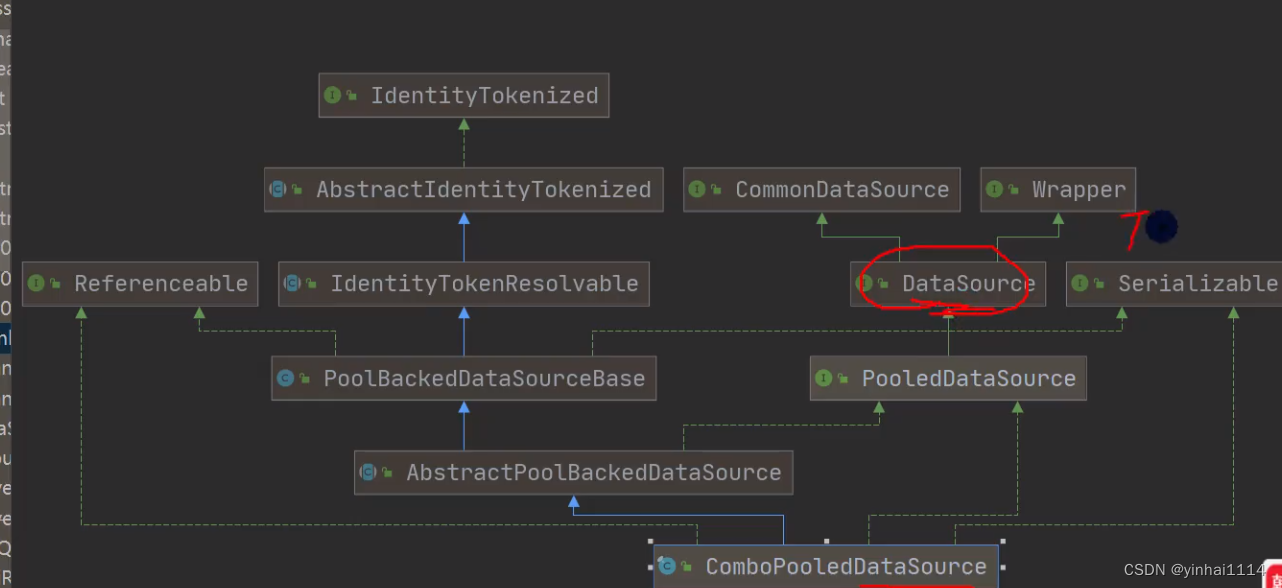
//方式1 在程序中指定相关参数@Testpublic void testC3P0_01() throws Exception {//创建一个数据源对象ComboPooledDataSource comboPooledDataSource = new ComboPooledDataSource();//获取相关连接//2. 通过配置文件mysql.properties 获取相关连接的信息Properties properties = new Properties();properties.load(new FileInputStream("src\\mysql.properties"));//读取相关的属性值String user = properties.getProperty("user");String password = properties.getProperty("password");String url = properties.getProperty("url");String driver = properties.getProperty("driver");//给数据源 comboPooledDataSource 设置相关参数//注意:连接管理是由 comboPooledDataSource 来管理comboPooledDataSource.setDriverClass(driver);comboPooledDataSource.setJdbcUrl(url);comboPooledDataSource.setUser(user);comboPooledDataSource.setPassword(password);//设置初始化连接数comboPooledDataSource.setInitialPoolSize(10);//最大连接数comboPooledDataSource.setMaxPoolSize(50);//测试连接池的效率, 测试对mysql 5000次操作long start = System.currentTimeMillis();for (int i = 0; i < 5000; i++) {Connection connection = comboPooledDataSource.getConnection(); //这个方法就是从 DataSource 接口实现的//System.out.println("连接OK");connection.close();}long end = System.currentTimeMillis();//c3p0 5000连接mysql 耗时=391System.out.println("c3p0 5000连接mysql 耗时=" + (end - start));}方式2 使用配置文件模版来完成
//第二种方式 使用配置文件模版来完成//1. 将c3p0 提供的 c3p0.config.xml 拷贝到 src目录下//2. 该文件指定了连接数据库和连接池的相关参数@Testpublic void testC3P0_02() throws SQLException {ComboPooledDataSource comboPooledDataSource = new ComboPooledDataSource("yinhai");//测试5000次连接mysqllong start = System.currentTimeMillis();System.out.println("开始执行....");for (int i = 0; i < 5000; i++) {Connection connection = comboPooledDataSource.getConnection();//System.out.println("连接OK~");connection.close();}long end = System.currentTimeMillis();//c3p0的第二种方式 耗时=413System.out.println("c3p0的第二种方式(5000) 耗时=" + (end - start));//1917}
5.Druid
public class Druid_ {@Testpublic static void main(String[] args) throws Exception {//1.加入jar包//2.加入配置文件//3.创建Properties对象 读取配置文件Properties properties = new Properties();properties.load(new FileInputStream("IDEA_Chapter25/src/druid.properties"));//4.创建一个指定参数的数据库连接池 Druid连接池DataSource dataSource = DruidDataSourceFactory.createDataSource(properties);long start = System.currentTimeMillis();for (int i = 0; i < 500000; i++) { //小次数和C3P0差别并不大Connection connection = dataSource.getConnection(); //这个方法就是从 DataSource 接口实现的//System.out.println("连接OK");connection.close();}System.out.println("连接成功");long end = System.currentTimeMillis();//c3p0 5000连接mysql 耗时=391System.out.println("Druid 5000连接mysql 耗时=" + (end - start));}
}

6.Apache-DBUtils
1.引出 模拟使用Arraylist 存放结果集
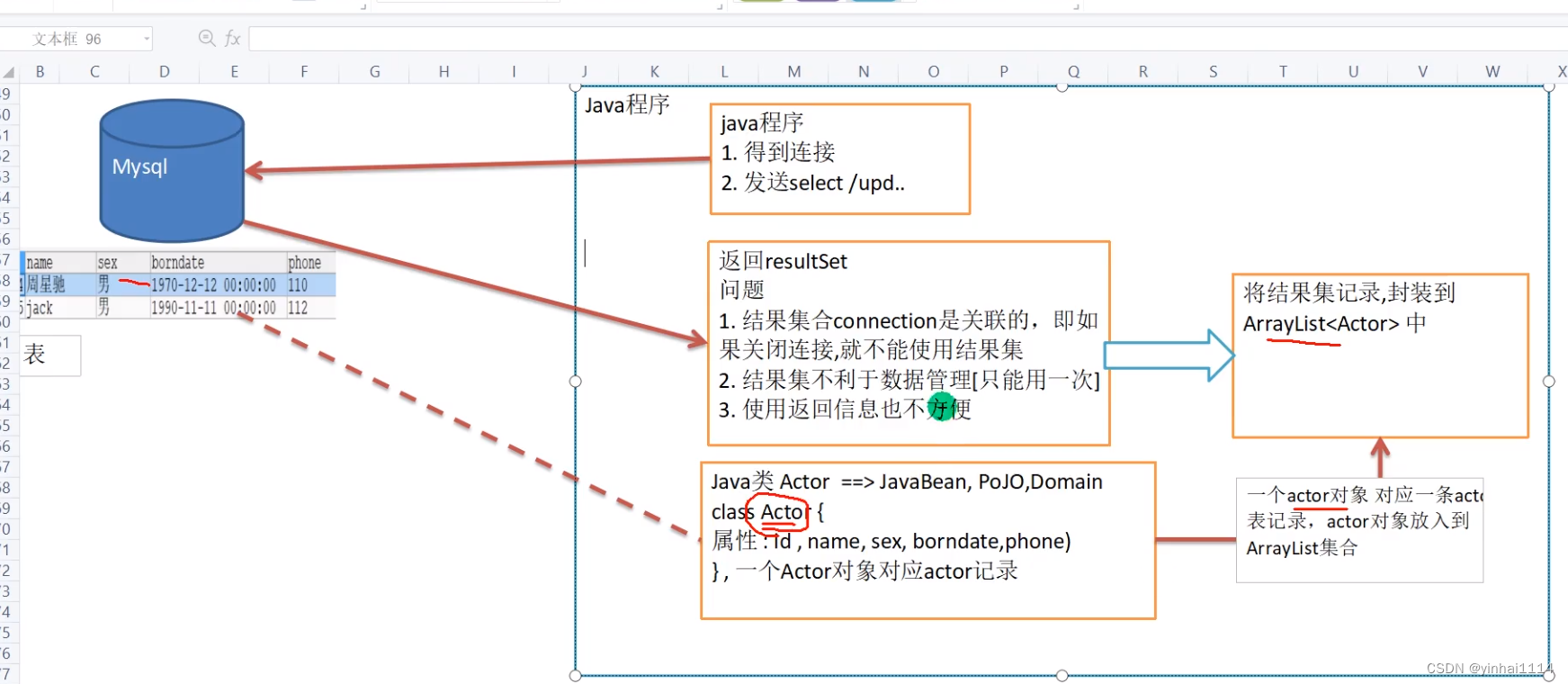
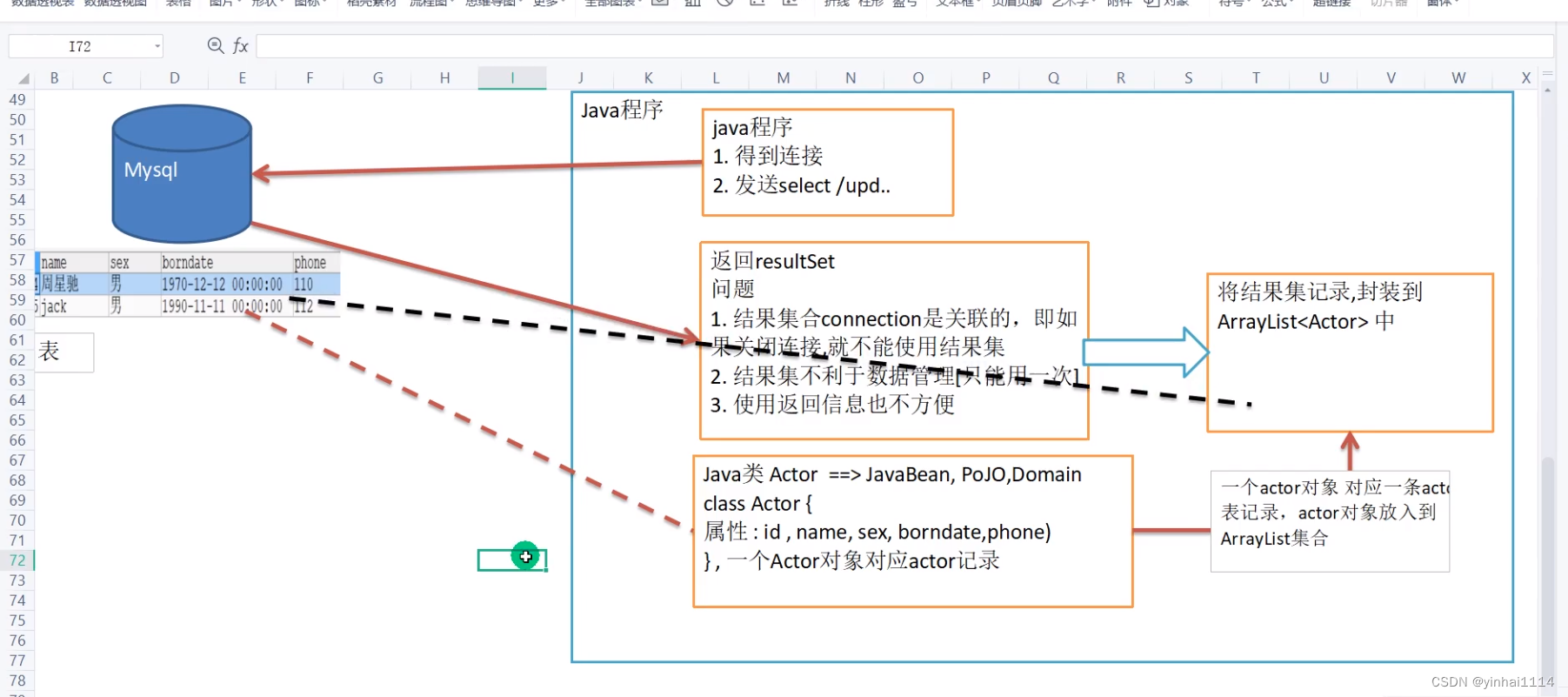
Actor类
public class Actor { //Javabean, POJO, Domain对象private Integer id;private String name;private String sex;private Date borndate;private String phone;public Actor() { //一定要给一个无参构造器[反射需要]}public Actor(Integer id, String name, String sex, Date borndate, String phone) {this.id = id;this.name = name;this.sex = sex;this.borndate = borndate;this.phone = phone;}public Integer getId() {return id;}public void setId(Integer id) {this.id = id;}public String getName() {return name;}public void setName(String name) {this.name = name;}public String getSex() {return sex;}public void setSex(String sex) {this.sex = sex;}public Date getBorndate() {return borndate;}public void setBorndate(Date borndate) {this.borndate = borndate;}public String getPhone() {return phone;}public void setPhone(String phone) {this.phone = phone;}@Overridepublic String toString() {return "\nActor{" +"id=" + id +", name='" + name + '\'' +", sex='" + sex + '\'' +", borndate=" + borndate +", phone='" + phone + '\'' +'}';}
}
模拟将Result结果集封装为ArrayList
//使用老师的土方法来解决ResultSet =封装=> Arraylist@Testpublic void /*ArrayList<Actor>*//*JUtil如果有具体返回值 就会不显示结果*/ testSelectToArrayList() {System.out.println("使用 druid方式完成");//1. 得到连接Connection connection = null;//2. 组织一个sqlString sql = "select * from actor where id >= ?";PreparedStatement preparedStatement = null;ResultSet set = null;ArrayList<Actor> list = new ArrayList<>();//创建ArrayList对象,存放actor对象//3. 创建PreparedStatement 对象try {connection = JDBCUtilsByDruid.getConnection();System.out.println(connection.getClass());//运行类型 com.alibaba.druid.pool.DruidPooledConnectionpreparedStatement = connection.prepareStatement(sql);preparedStatement.setInt(1, 1);//给?号赋值//执行, 得到结果集set = preparedStatement.executeQuery();//遍历该结果集while (set.next()) {int id = set.getInt("id");String name = set.getString("name");//getName()String sex = set.getString("sex");//getSex()Date borndate = set.getDate("borndate");String phone = set.getString("phone");//把得到的resultset 的记录,封装到 Actor对象,放入到list集合list.add(new Actor(id, name, sex, borndate, phone));}System.out.println("list集合数据=" + list);for(Actor actor : list) {System.out.println("id=" + actor.getId() + "\t" + actor.getName());}} catch (SQLException e) {e.printStackTrace();} finally {//关闭资源JDBCUtilsByDruid.close(set, preparedStatement, connection);}//因为ArrayList 和 connection 没有任何关联,所以该集合可以复用.//return list;}
2.基本介绍
commons- dbutils是Apache组织提供的一个开源JDBC工具类库,它是对JDBC的封装,使用dbutils能极大简化jdbc编码的工作量。
DbUtils类
1. QueryRunner类:该类封装了SQL的执行,是线程安全的。可以实现增、删、改、查、批处理
2.使用QueryRunner类实现查询
3.ResultSetHandler接口:该接口用于处理java.sql.ResultSet,将数据按要求转换为另一种形式

3.DBUtils-USE
//使用apache-DBUtils 工具类 + druid完成对表的crud操作public void testQueryMany() throws SQLException {//1. 得到连接 druidConnection connection = JDBCUtilsByDruid.getConnection();//2.使用DBUtils类和接口,先引入DBUtils相关的jar,加入到本Project//3.创建QueryRunnerQueryRunner queryRunner = new QueryRunner();//4.就可以执行相关方法,返回ArrayList结果集// String sql = "select * from actor where id >= ?";// 注意: sql 语句也可以查询部分列String sql = "select id, name from actor where id >= ?";//(1) query 方法就是执行sql 语句,得到resultSet ---封装到 --> ArrayList 集合中//(2) 返回集合//(3) connection: 连接//(4) sql : 执行的sql语句//(5) new BeanListHandler<>(Actor.class): 在将resultSet -> Actor 对象 -> 封装到 ArrayList// 底层使用反射机制 去获取Actor 类的属性,然后进行封装//(6) 1 就是给 sql 语句中的? 赋值,可以有多个值,因为是可变参数Object... params//(7) 底层得到的resultSet ,会在query 关闭, 还会关闭PreparedStatementList<Actor> list =queryRunner.query(connection, sql, new BeanListHandler<>(Actor.class), 1);/*** 分析 queryRunner.query方法:* public <T> T query(Connection conn, String sql, ResultSetHandler<T> rsh, Object... params) throws SQLException {* PreparedStatement stmt = null;//定义PreparedStatement* ResultSet rs = null;//接收返回的 ResultSet* Object result = null;//返回ArrayList** try {* stmt = this.prepareStatement(conn, sql);//创建PreparedStatement* this.fillStatement(stmt, params);//对sql 进行 ? 赋值* rs = this.wrap(stmt.executeQuery());//执行sql,返回resultset* result = rsh.handle(rs);//返回的resultset --> arrayList[result] [使用到反射,对传入class对象处理]* } catch (SQLException var33) {* this.rethrow(var33, sql, params);* } finally {* try {* this.close(rs);//关闭resultset* } finally {* this.close((Statement)stmt);//关闭preparedstatement对象* }* }** return result;* }*/System.out.println("输出集合的信息");for (Actor actor : list) {System.out.print(actor);}//释放资源JDBCUtilsByDruid.close(null, null, connection);}//演示 apache-dbutils + druid 完成 返回的结果是单行记录(单个对象)@Testpublic void testQuerySingle() throws SQLException {//1. 得到 连接 (druid)Connection connection = JDBCUtilsByDruid.getConnection();//2. 使用 DBUtils 类和接口 , 先引入DBUtils 相关的jar , 加入到本Project//3. 创建 QueryRunnerQueryRunner queryRunner = new QueryRunner();//4. 就可以执行相关的方法,返回单个对象String sql = "select * from actor where id = ?";// 因为我们返回的单行记录<--->单个对象 , 使用的Hander 是 BeanHandlerActor actor = queryRunner.query(connection, sql, new BeanHandler<>(Actor.class), 10);System.out.println(actor);// 释放资源JDBCUtilsByDruid.close(null, null, connection);}//演示apache-dbutils + druid 完成查询结果是单行单列-返回的就是object@Testpublic void testScalar() throws SQLException {//1. 得到 连接 (druid)Connection connection = JDBCUtilsByDruid.getConnection();//2. 使用 DBUtils 类和接口 , 先引入DBUtils 相关的jar , 加入到本Project//3. 创建 QueryRunnerQueryRunner queryRunner = new QueryRunner();//4. 就可以执行相关的方法,返回单行单列 , 返回的就是ObjectString sql = "select name from actor where id = ?";//老师解读: 因为返回的是一个对象, 使用的handler 就是 ScalarHandlerObject obj = queryRunner.query(connection, sql, new ScalarHandler(), 4);System.out.println(obj);// 释放资源JDBCUtilsByDruid.close(null, null, connection);}//演示apache-dbutils + druid 完成 dml (update, insert ,delete)@Testpublic void testDML() throws SQLException {//1. 得到 连接 (druid)Connection connection = JDBCUtilsByDruid.getConnection();//2. 使用 DBUtils 类和接口 , 先引入DBUtils 相关的jar , 加入到本Project//3. 创建 QueryRunnerQueryRunner queryRunner = new QueryRunner();//4. 这里组织sql 完成 update, insert delete//String sql = "update actor set name = ? where id = ?";//String sql = "insert into actor values(null, ?, ?, ?, ?)";String sql = "delete from actor where id = ?";//老韩解读//(1) 执行dml 操作是 queryRunner.update()//(2) 返回的值是受影响的行数 (affected: 受影响)//int affectedRow = queryRunner.update(connection, sql, "林青霞", "女", "1966-10-10", "116");int affectedRow = queryRunner.update(connection, sql, 1000 );System.out.println(affectedRow > 0 ? "执行成功" : "执行没有影响到表");//如果是0 就是没有影响表// 释放资源JDBCUtilsByDruid.close(null, null, connection);}
}
数据库和java的数据类型转换
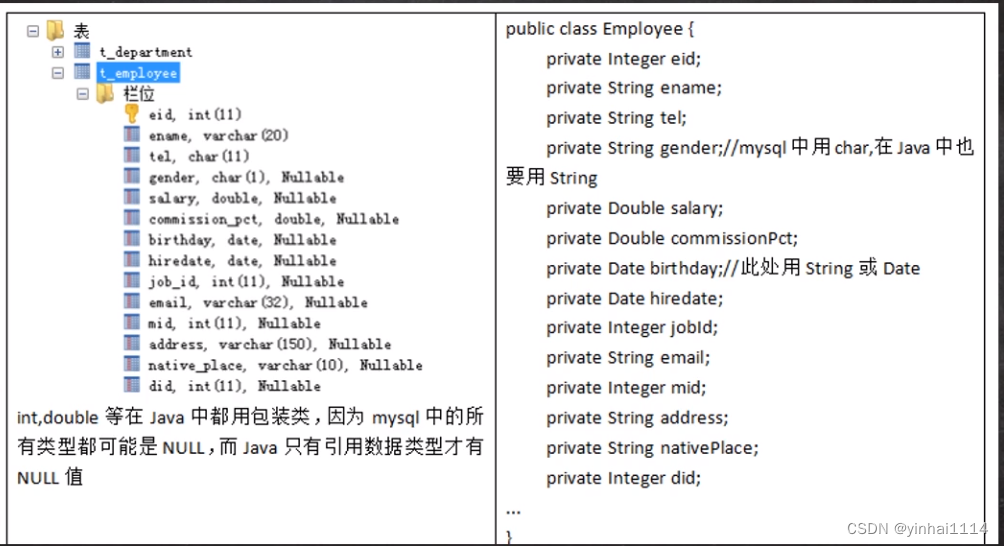
7.DAO和增删改查通用方法- BasicDao
apache- dbutils+ Druid简化了JDBC开发,但还有不足:
1. SQL 语句是固定, 不能通过参数传入,通用性不好,需要进行改进,更方便执行增删改查
2.对于select 操作,如果有返回值,返回类型不能固定,需要使用泛型
3.将来的表很多, 业务需求复杂,不可能只靠一个Java类完成
4.引出 =》BasicDAO 画出示意图
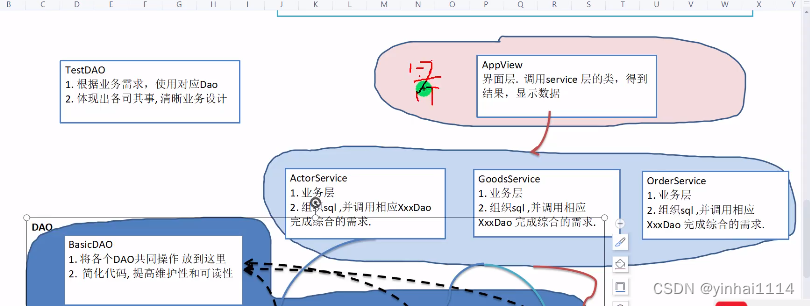
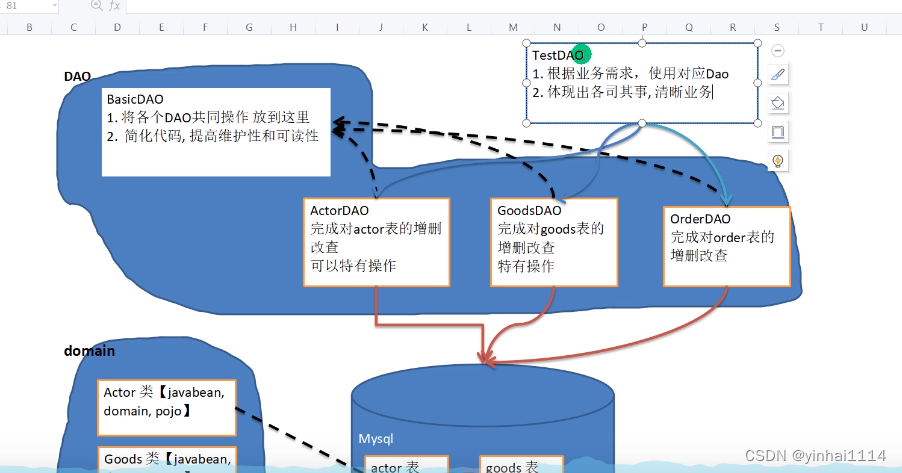

1.基本说明
1. DAO: data access object数据访问对象
2.这样的通用类, 称为BasicDao ,是专门和数据库交互的,即完成对数据库(表)的crud操作。
3. 在BaiscDao 的基础上,实现一张表对应个Dao,更好的完成功能, 比如Customer表-Customer.java类(javabean) - CustomerDao.java
完成一个简单设计
com.yinhai.dao_
1. com.yinhai.dao_.utils //工具类
2. com.yinhai.dao_.domain // javabean
3. com.yinhai.dao_.dao //存放XxxDAO和BasicDAO
4. com.yinhai.dao.test //写测试类
